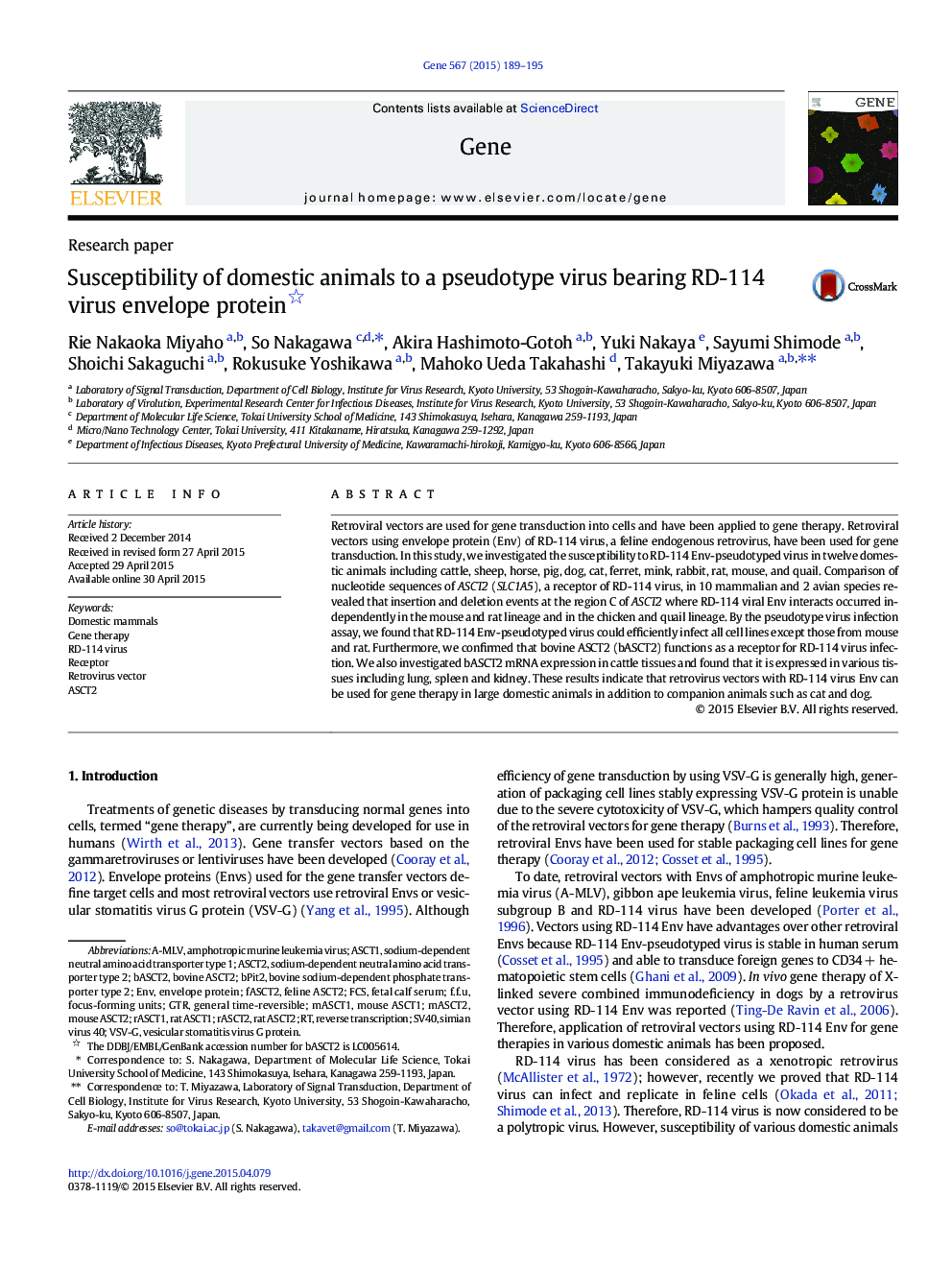| Article ID | Journal | Published Year | Pages | File Type |
|---|---|---|---|---|
| 2815648 | Gene | 2015 | 7 Pages |
•・Amino acid sequences of region C of ASCT2 were conserved in domestic mammals.•・Various domestic animal cells were susceptible to RD-114 pseudotype virus.•・Vectors with RD-114 virus Env would be a useful tool for gene therapy in various animals.
Retroviral vectors are used for gene transduction into cells and have been applied to gene therapy. Retroviral vectors using envelope protein (Env) of RD-114 virus, a feline endogenous retrovirus, have been used for gene transduction. In this study, we investigated the susceptibility to RD-114 Env-pseudotyped virus in twelve domestic animals including cattle, sheep, horse, pig, dog, cat, ferret, mink, rabbit, rat, mouse, and quail. Comparison of nucleotide sequences of ASCT2 (SLC1A5), a receptor of RD-114 virus, in 10 mammalian and 2 avian species revealed that insertion and deletion events at the region C of ASCT2 where RD-114 viral Env interacts occurred independently in the mouse and rat lineage and in the chicken and quail lineage. By the pseudotype virus infection assay, we found that RD-114 Env-pseudotyped virus could efficiently infect all cell lines except those from mouse and rat. Furthermore, we confirmed that bovine ASCT2 (bASCT2) functions as a receptor for RD-114 virus infection. We also investigated bASCT2 mRNA expression in cattle tissues and found that it is expressed in various tissues including lung, spleen and kidney. These results indicate that retrovirus vectors with RD-114 virus Env can be used for gene therapy in large domestic animals in addition to companion animals such as cat and dog.
